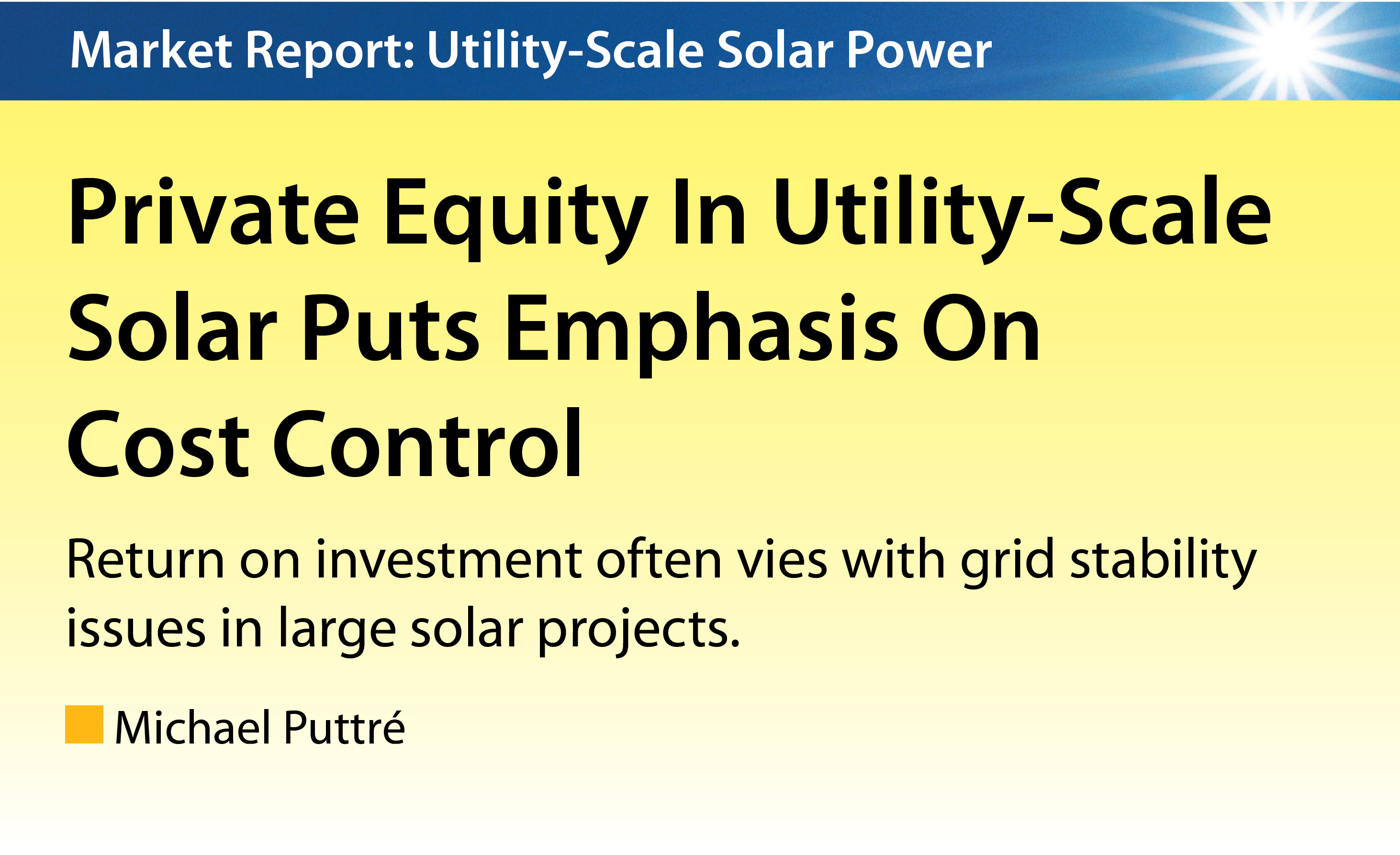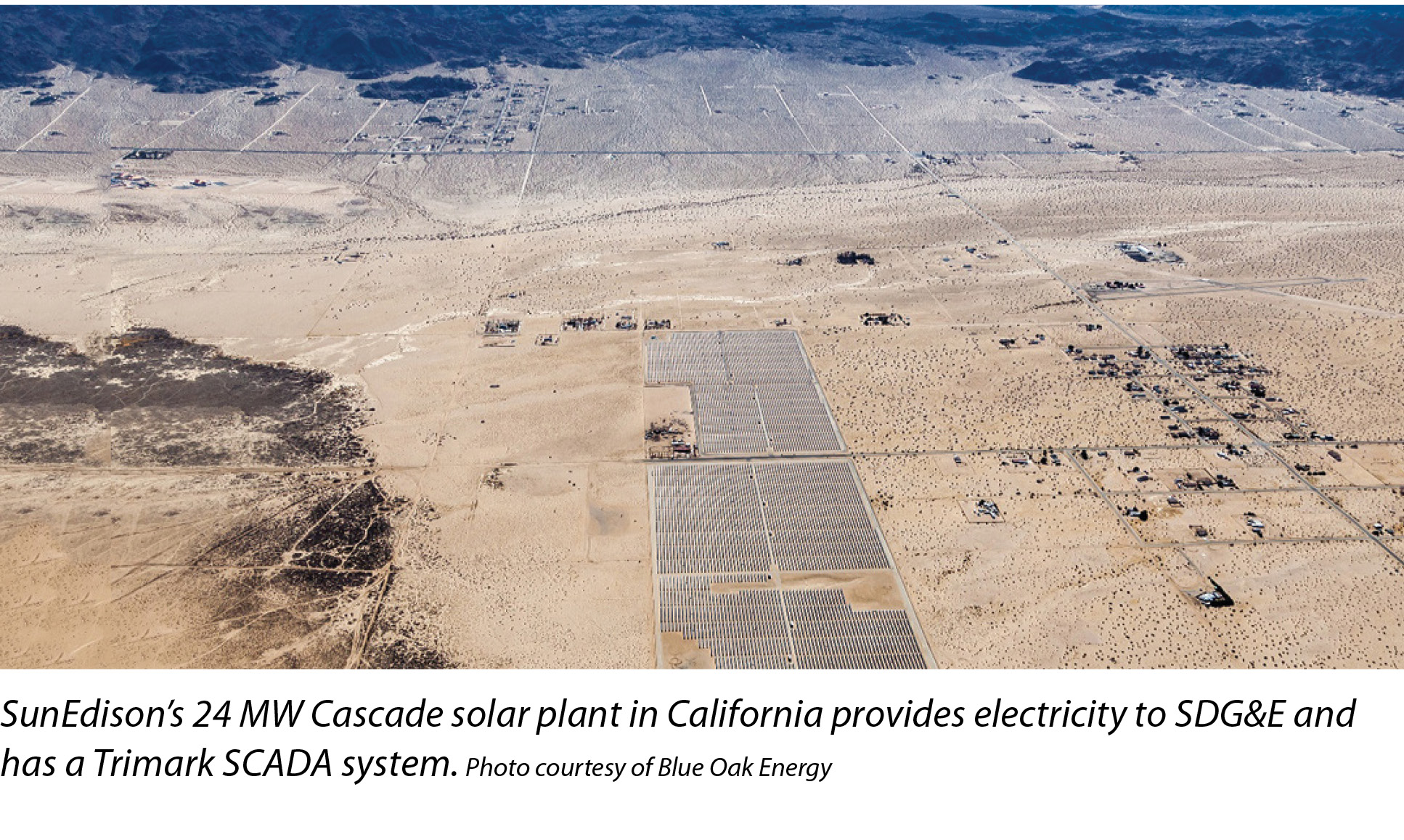

301 Moved Permanently
Utilities continue to add solar assets capacity to their generating capacity, building up data and operational experience. The early phase of this expansion was focused on the technical aspects of the plants themselves, how they should be configured and what technologies to employ. These concerns are giving way to integrating the variable generating capacity into the grid in a stable way - and, invariably, how to do this most profitably.
The U.S. Department of Energy’s Loan Programs Office (LPO) is not shy about taking credit for the inception and successful expansion of utility-scale solar power in the country. Of the 10.25 GW of solar capacity in the U.S. as of the end of last year, about 10% of that was backed by LPO programs of loans or loan guarantees. However, having seen the first 500 MW or so of utility-scale photovoltaic power plants into existence and all of the large concentrating solar power capacity now coming online, the LPO has stepped back in order to let private capital take the lead on such projects going forward.
As private capital becomes more important to the development of utility-scale solar power in the U.S., return on investment (ROI) takes center stage in developers’ expected-utility calculations. Thus, utility-scale solar power projects must be shown to make economic sense in their proposed markets. Solar yield, operations and maintenance (O&M), and the cost of the deals themselves all come into play.

Yield and operations
One of the fundamental technical questions when it comes to utility plant projects is whether fixed-tilt or tracking makes the most sense from an ROI standpoint. As is the case with any large-scale system, factors including site topography and weather patterns should be top of mind for developers when considering trackers.
Jay Johnson, vice president of business development for tracker manufacturer Exosun Inc., says an essential element to tracker-equipped system design is the calculation of ground cover ratio (GCR), which is the ratio between the PV modules’ area and the total ground area.
“The higher the GCR, the smaller the distance between the tables, thus increasing panel-on-panel shading,” Johnson says. “Unlike fixed-tilt structures, trackers can position tables to avoid shading the adjacent panels. Another key consideration is the orientation of the trackers according to the north-south axis. Depending on the project, a slight change in tables’ orientation can optimize GCR, thus increasing the plant’s yield.”
Another factor to consider is whether the utility’s rate structure fluctuates with demand. According to Johnson, more utilities are shifting to such time-of-use rate structures.
“This means that in periods of peak electricity demand, prices are higher, and vice versa,” he says. “Trackers can boost system production during periods of peak electricity use, corresponding to higher returns for owners. PV plants equipped with trackers can earn more revenue from electricity generated during the second half of the day, when demand is high. As electricity prices continue to rise in the coming years, these returns will only increase.”
Regulatory and business drivers are causing a shift in system requirements surrounding control of utility-scale PV generation, as utilities and grid operators begin to address higher penetrations of distributed energy resources on the grid. Inverter control requirements have been driven by regulations and standards such as pending IEEE 1547 A, pending California Public Utility Commission Rule 21 updates, UL 1741 and IEC 61850.
Bob Wood, chief technology officer for Trimark Associates Inc., says government regulations are just one reason utility-scale solar power plants are requiring supervisory control and data acquisition (SCADA) and sophisticated control systems. While the utility and the state regulators may be primarily concerned with grid stability, owner-operators want to generate as much cash from the asset as possible.
“Oftentimes, these goals are in conflict,” Wood says.
Trimark has commissioned a unified control and data telemetry system to SunEdison’s 24 MW Cascade solar project in California. The 150-acre PV power plant incorporates over 75,000 SunEdison Silvantis monocrystalline modules mounted on SunEdison AP90 single-axis trackers. Cascade is supplying electricity to San Diego Gas & Electric (SDG&E) through a 20-year power purchase agreement (PPA).
Trimark says its T1-S SCADA system provides a unified user interface and allows site operators to send commands to connect or disconnect inverters, adjust maximum power generation levels and establish power factor set points. Operators can control all inverters as a single resource or each inverter separately. The system provides real-time operational data to the California Independent System Operator, performance monitoring and data visualization, device status and alarms, and historical trending and reporting.
According to Wood, monitoring and control systems can also be used to incorporate business rules into the solar site operator interface. Such rules can trigger alarms when the plant is operating at a loss, for example.
“We try to be as flexible as possible with how data can be presented to interested parties,” Wood says.
The art of the deal
As rules change and the universe of stakeholders in utility solar projects expands, standardization of contracts and forms is a possible avenue for achieving cost savings in project development. Jamie Evans, managing director of Panasonic Eco Solutions North America, points out that in the utility space, there generally are standard contracts and a “take it or leave it” philosophy. Nevertheless, developers and owner-operators can achieve savings to be gained from integrating and standardizing contracts and agreements common to solar power deals, including PPAs and O&M agreements.
The challenges of negotiating and financing the deal, sometimes with multiple parties, can frustrate potential customers and make the transaction cost prohibitive, Evans says. For those contemplating PPAs, many of the traditional metrics used to calculate ROI are less relevant in the context of new financing options. In addition, the focus for these customers should be expanded to include non-cash benefits, such as brand identity and reputation.
“If contracts are done ineffectually, hundreds of thousands of dollars in legal fees and deal structuring fees can be consumed on even a modest deal,” Evans says. “Also, it might be months before the sides have everything straightened out, and then maybe you are down on margins for the deal.”
Large utility-scale deals can absorb a million dollars in legal fees as part and parcel of the exchange, he says. Small utility- and commercial-scale deals are much less able to sustain such fees. Moreover, these sorts of deals, which are likely to become more common as distributed generation and small-scale utility projects supersede the era of mega solar plants. New sets of partners with new lawyers and new players can overwhelm solar projects, which tend to have low to modest margins in the first place.
“This can be crushing, just crushing,” Evans says. “You definitely need to bring some efficiency to the process, and standardized contracts can help with that.” S
Market Report: Utility-Scale Solar Power
Private Equity In Utility-Scale Solar Puts Emphasis On Cost Control
By Michael Puttré
Return on investment often vies with grid stability issues in large solar projects.
si body si body i si body bi si body b
si depbio
- si bullets
si sh
si subhead
pullquote
si first graph
si sh no rule
si last graph